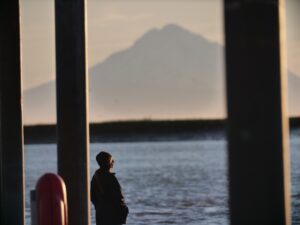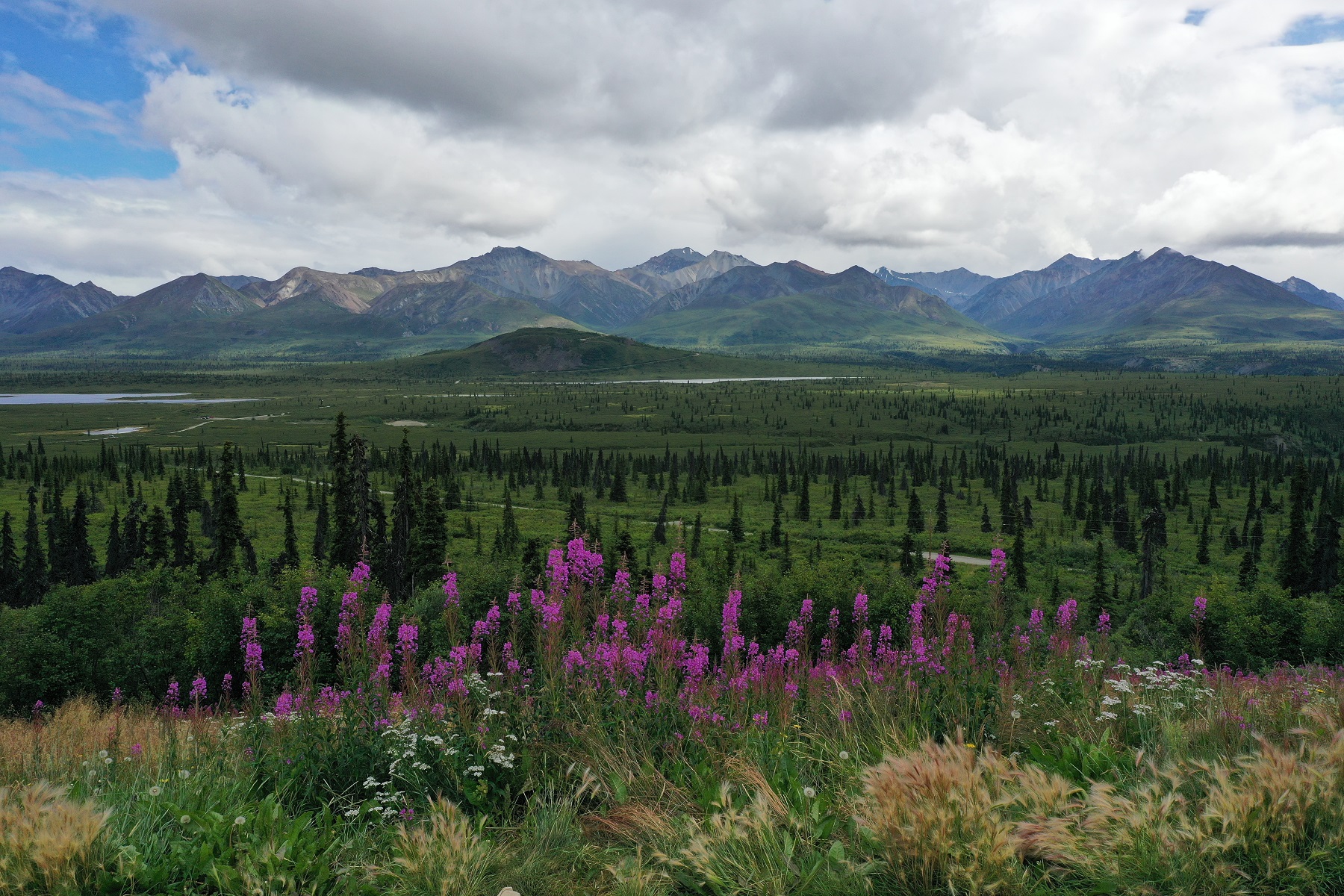Alaska State Parks
There are over 120 State Parks in Alaska, spanning over 3 million acres. This acreage creates the largest state park network in the United States. This large network of parks was designed to provide outdoor recreation opportunities and conserve and interpret natural, cultural, and historic resources for the use, enjoyment, and welfare of the people. Many of these parks are within or adjacent to National Park Preserves.
State parks require an entry fee at many trail heads of $5 with drop payment stations available. Camping fees vary from park to park. Usage of parks are subject to frequent change due to

Some days can offer you crystal clears views in the state parks
environmental factors. Keep Alaska wild, and be sure to follow park regulations while visiting. Be privy to the ‘Leave No Trace‘ practices so as to ensure the integrity of Alaska’s wildlands.
Denali State Park
This park is adjacent to the much larger national park, and offers a couple of wilderness trails that are maintained, giving unparalleled views of the Alaska Range. The park encompasses 325,240 acres. Here, there are roadside camping options and a quick 100 miles from Anchorage, with easy accessibility.
If you are lucky, on clear days, the roadside can be a great place for scenic views of the peak of Denali. The preserve provides views of wildlife in their habitats and a chance to view both the Talkeetna Mountains and the Alaska Range. You can enjoy sights from the George Parks Highway. That road can connect you all the way to Fairbanks if you wish.
Chugach State Park
Located just east of Anchorage, this park encompasses a half million acres of the Chugach Forest. Originally, the park was created to protect the water supply of Anchorage. Eklutna Lake resides here and is the end of the line for the melt from the Eklutna Glacier. This land is easily accessible from the highway and is a close adventure from Anchorage. This state area has developed campsites for use and public use cabins by reservation.
You will find yourself looking into lush coniferous forest and exploring mountainsides here. Bounded by the Chugach Mountains, the Wrangells Mountains, the Alaska Range, and the Prince William Sound, there is not shortage of views. The Turnagain Arm lies within the park providing opportunities for hiking, biking, and other recreational activities on developed trail systems. This park provides views of glaciers sitting high in the surrounding mountains that border the coast . Many other natural areas are close by and easily accessible too.
Kachemak Bay State Park

A woman takes in a breathtaking sunset along the coast
This park is the first designated state park in the Alaska system. It is the only wilderness park in the
system. There is no road to, or in the park. You must get there by float plane or boat. The park is located in the Cook Inlet on the Southwest side of the Kenai Peninsula. This space is excellent for bird watching, the nutritionally rich water attracts whales, and other seaside mammals are abundant for sightings.
There are a couple crude campgrounds available for those who crave the wilderness camping experience. Nearby maintained trails help you gain elevation to see over the city of Homer on a clear day and into the surrounding mountains and glaciers. The views are breathtaking and worthy of the ferry ride.
Wood-Tikchik State Park
North of Dillingham in southwest Alaska, this park encompasses over 1.6 million acres. Wood-Tikchik is the largest and most remote state park in the United States. This area, once a fur trading center, is now a remote location only accessible by one road from Dillingham. Although, a handful of private lodges exist in the park that you can reserve.
Additioanly, you can camp throughout the park. Some areas do require a permit. Hunting and fishing are allowed within the park. Be sure to contact hunting and fishing for up to date permitting and regulations. The Wood River and Nuyakuk River winds through these wilds, emptying into Bristol Bay. This park is a critical area for spawning salmon and has a vast network of small lakes. Enter this area by foot, river, limited road access, or float plane.
Point Bridge State Park
40 miles north of Juneau this park resides in a temperate rainforest. This park is great for exploring trails that roll through sprawling meadows and marshland.

Bald Eagles frequent the shorelines, scavenging for food
As you move further along you will find the rocky beaches of the coast.
The terrain here is lush with diversity of flora and fauna. Moss covers the forests and opens to
cloud covered bays. From there you can spot the surrounding mountains and glaciers in the distance. High cliffs on the beaches are perfect bird watching spots to observe migratory coastal birds in their nesting season.
A few public use cabins are available for reservation in the park. If you want to watch the salmon run, creeks and streams wind through the area to showcase the spawning season. The trails for the park tend to be boggy and wet.
An extensive trail system exists for both motorized and non-motorized trails. You can even travel into the marsh lands by boardwalk to see the architecture of large beaver dams. Whether your in the woods or near the sea, wildlife sightings are highly likely. Sea lions lounge on giant rocks and during the summer months you may even spot humpback whales feeding in the bay. This park offers space for summer activities and is popular for winter skiing activities, such as skiing and snowshoeing as well.
Afognak Island State Park
This island park is located northeast of Kodiak Island off the Alaskan Peninsula. Before becoming the 49th state this park was deemed the first conservation area in the United States. Now the state manages and operates this remote area.
This island is accessible only by float plane that departs from Kodiak Island. The park operates year round and has two private cabins that are available for reservation only. This island has two lakes that lie within the boundaries. Given the rainforest ecosystem, there is a thick moss that covers the forest and lush greenery that decorates the landscape.
Surrounded by various bays, the shorelines are made of rocky beaches, covered in driftwood. From the beaches you can enjoy mountainous views and easy access to coastal recreation. Many people seek out the park due to the close proximity of paramount fresh water and salt water fishing opportunities. It could also be a beach combers delight.

